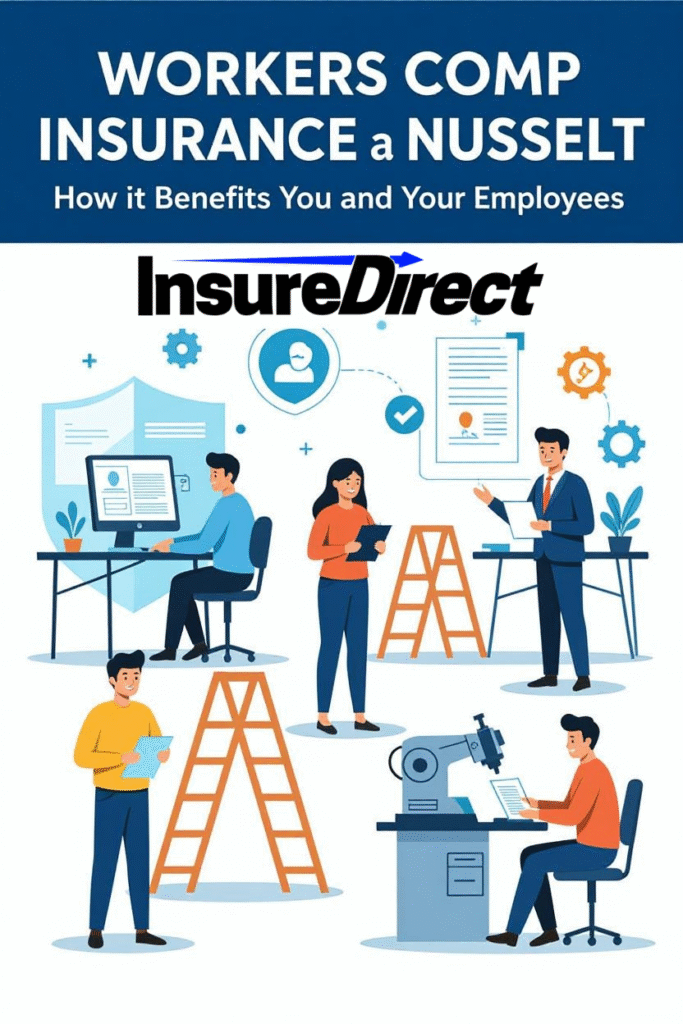Workers comp insurance… boring, right? Or maybe not. It’s kind of like a safety parachute for your employees and a shield for you. Slip, trip, sprain a wrist, or worse—someone’s got your back. Literally. In 2025, business owners keep asking: “How much will this set me back?” The answer? Well… it depends. And also, sometimes, it doesn’t. Let’s break it down.
What Is Workers’ Compensation Insurance Anyway?
Think of workers’ comp as a safety net—not for acrobats, but for your team.
- Hurt your back on the job? Pays the medical bills.
- Can’t work for a few weeks? Replaces part of your paycheck.
- Injured badly enough to never return to the same job? Disability benefits kick in.
- Death? Survivors get financial support.
Who needs it? Anyone hiring employees. Small business owners, contractors, IT consultants, store managers, restaurants… basically, if someone’s punching a clock and you’re writing a paycheck, you need coverage.
What it doesn’t cover: lying, cheating, intentionally hurting someone, or slipping at home on your own carpet.
Also, watch out for claims-made vs occurrence policies. If your coverage expired last month, you might be out of luck unless you’ve purchased tail coverage—a kind of insurance boomerang.
Why It Matters
- Employees: They’re taken care of, financially secure, not suing over every bump or bruise.
- Employers: Protected from surprise lawsuits and massive medical bills.
- Everyone wins—at least, most of the time.
Coverage Breakdown
Workers’ comp isn’t a single line item. It has flavors:
- Medical Benefits – Doctors, hospital stays, and physical therapy. Broken wrist? Back strain? Covered.
- Wage Replacement – Usually 66–80% of your normal pay while you’re out. Still gotta pay rent.
- Disability Benefits – Temporary, partial, total, or sometimes permanent.
- Death Benefits – Funeral costs, family support. Sad but necessary.
- Legal Defense – If a claim gets messy, lawyers are covered.
Who Needs It
Essentially, every employer with staff, even part-time. Some states let independent contractors slide, but don’t assume. Always check.
High-risk industries—construction, manufacturing, transport—must pay extra attention. Office work? Not entirely safe. Someone can spill coffee on wires or slip on a wet floor.
How Much Does It Cost in 2025
No fixed price here. Many variables affect your premium:
- Industry Risk: High-risk = higher cost. Finance or construction? Ouch.
- Payroll Size: More employees = more exposure.
- Claims History: Frequent past injuries? Premiums rise.
- State Rules: Minimums, maximums, special classifications.
- Safety Programs: Safer workplaces = lower rates.
Ballpark numbers:
- Small business (low-risk): $0.75 – $2.74 per $100 of payroll
- High-risk industries: $3 – $8 per $100 of payroll
Example: $200,000 payroll for a small retail store might cost $1,500–$5,500 annually. Varies, obviously.
Factors That Influence Cost
- Employee Classification: Receptionist vs construction worker = different rates.
- Business Size & Payroll: Bigger staff = pricier.
- Claims History: Past claims can drive up premiums.
- State Laws: Some quirky rules, always impactful.
- Safety Programs & Training: OSHA compliance and documented safety procedures can reduce costs.
Common Myths
- “Only risky jobs need workers’ comp.” Nope. Even office staff can slip on wet floors or get injured handling equipment.
- “Workers comp is optional.” In most states, not an option. Hiring employees? You’re obligated.
- “Covers everything.” False. Off-duty injuries, misconduct, or non-work-related illnesses are usually excluded.
- “Claims always raise premiums.” Not necessarily. Good safety practices often keep rates lower even after minor claims.
How to Reduce Premiums
- Safety Training: Fewer accidents, lower costs.
- Audit the Workplace: Spot hazards before they cost.
- Report Minor Injuries Early: Prevent escalation.
- Accurate Employee Classification: Avoid overpaying.
- Policy Packages: Bundle general liability + workers comp = discounts.
- Group Plans: Professional associations often offer better rates.
Even small tweaks can save hundreds or thousands a year.
Real-Life Examples
- Coffee shop installs anti-slip mats. Fewer injuries. Premiums drop 15%.
- Construction firm invests in PPE training. Lower claims, happier staff, reduced premiums.
- Office startup buys workers’ comp anyway. Employee trips, breaks an arm, policy pays medical bills, and wage replacement. Crisis avoided.
Key Takeaways
- Workers’ comp protects everyone.
- Premiums vary by industry, payroll, claims, and state.
- Compliance is mandatory—don’t ignore it.
- Safety investments reduce claims and premiums.
- Coverage includes medical, wage replacement, disability, death, and legal defense.
SEO Keywords to Include
- Workers comp insurance 2025
- Workers compensation explained
- How workers’ comp protects employees
- Workers’ comp small business cost.
- Employer liability insurance coverage
- Injury in the workplace insurance
- Professional workers’ comp insurance policies
Integrate them naturally in headings, subheadings, and paragraphs. Avoid keyword stuffing.
Conclusion
Workers comp is more than a legal requirement—it’s protection, peace of mind, and stability. Accidents happen, injuries occur, and without insurance, costs can be massive.
Investing in safety programs, policy bundling, and correct employee classification can reduce premiums while keeping your team protected. Workers comp isn’t paperwork—it’s your safety net in a risky world.
Contact InsureDirect for Workers’ Comp Insurance
InsureDirect.com
Corporate Home Office
618 South Broad Street, Lansdale, Pennsylvania 19446
Email: contact@insuredirect.com
Phone: (800) 807-0762 ext. 602
Corporate Home Office
618 South Broad Street, Lansdale, Pennsylvania 19446
Email: contact@insuredirect.com
Phone: (800) 807-0762 ext. 602
Keep your workplace and employees safe with total protection from InsureDirect—because your home and your team deserve nothing less than the best.

